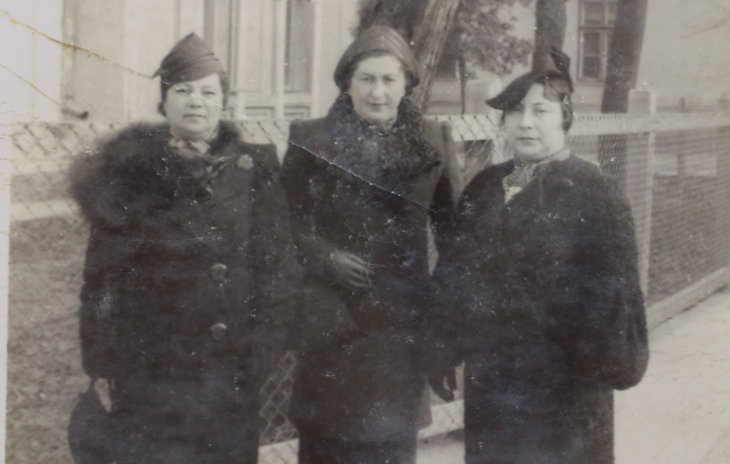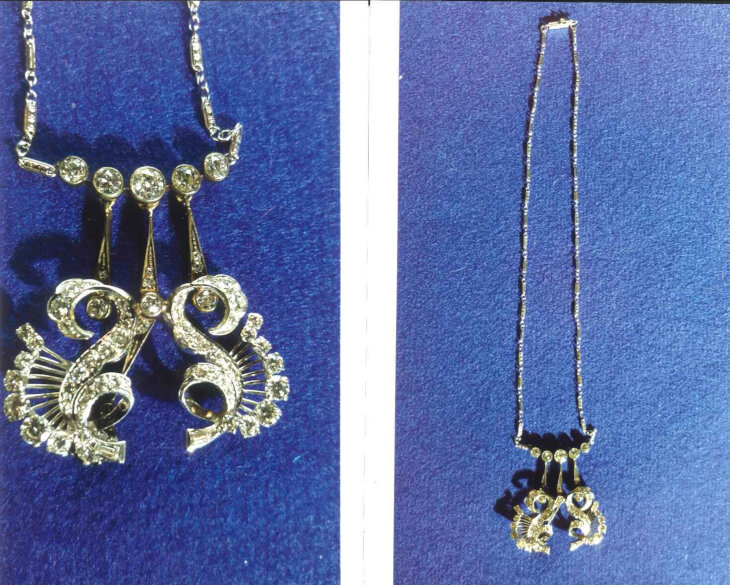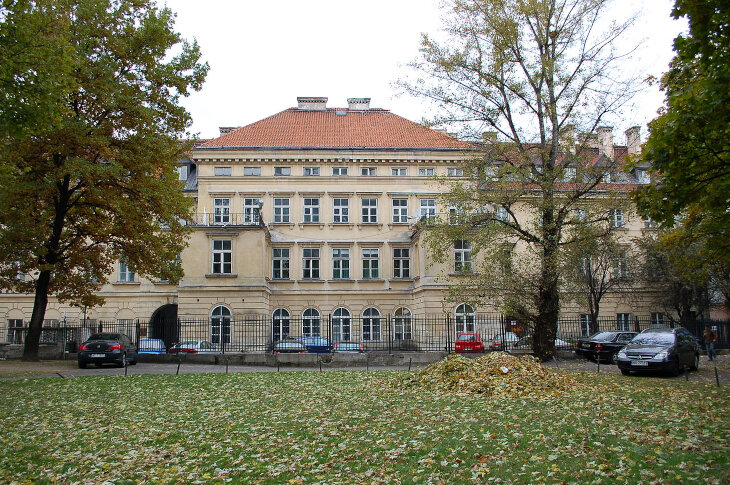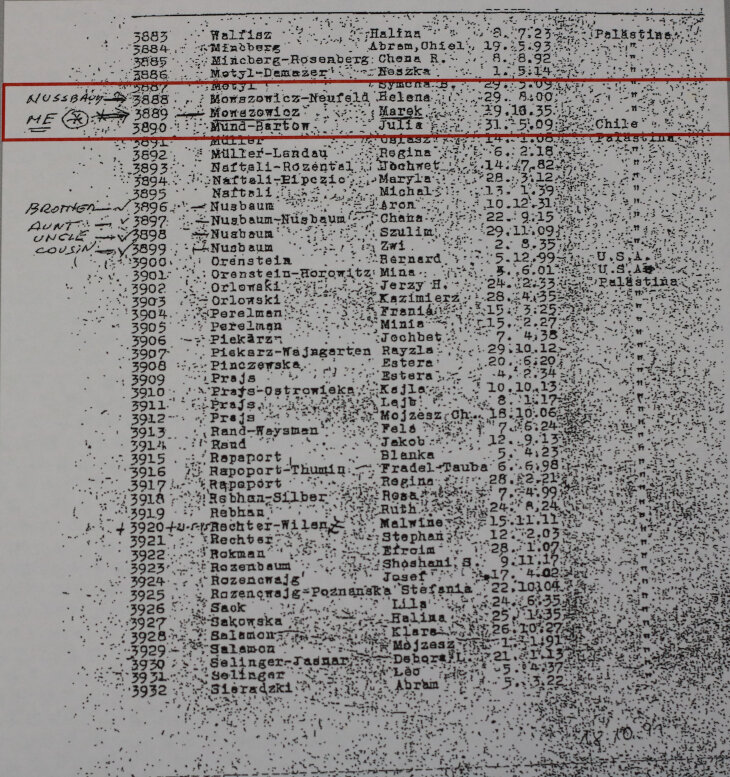 Passover’s Message of Hope in the Aftermath of Oct. 7
Passover’s Message of Hope in the Aftermath of Oct. 7


11 min read
Dr. Mark Nusbaum hid from Nazis in a secret room and is one of the few children who survived Bergen Belsen concentration camp.
Like Anne Frank, Dr. Mark Nusbaum hid from the Nazis in a secret room for almost eight months. However, unlike Anne Frank, he survived the Bergen Belsen concentration camp, one of the few children in the world to do so.
Somehow, he managed to rise from the depths of hell to build a successful life, raise a wonderful family, and become a philanthropist supporting various organizations, hospitals, and educational institutions.
Mark Nusbaum was born on October 10, 1935, in Sandomierz, Poland.
 Mark as a baby, his parents, Regina and Abraham, and brother Aaron, 4, circa 1936 in their apartment in Sandomierz.
Mark as a baby, his parents, Regina and Abraham, and brother Aaron, 4, circa 1936 in their apartment in Sandomierz.
His father was a successful businessman and communal leader. In April 1940, after the war broke out, his father was arrested on his way home from the synagogue. He was imprisoned in the local jail for the “crime” of being a Jew. He was subsequently transferred to Ravensbruck and then to Buchenwald concentration camp, and in July 1942, the family received written notice from the camp that their father had “succumbed to his illness.”
 Regina Nussbaum, middle, with her two sisters in Sandomierz, 1938
Regina Nussbaum, middle, with her two sisters in Sandomierz, 1938
As the Sandomierz ghetto was being created in the Fall of 1942, Mark’s family decided to flee and hide out in the much larger city of Warsaw, on the Aryan side, where they hoped they’d be safer and much harder to find.
The family used their business connections to locate a gentile family in Warsaw who agreed to hide them within their apartment. “I have no idea who this family was, or even their name. I would love to find out who they were and reconnect to express my gratitude to them or to their descendants.”
Before fleeing to Warsaw, Mark’s mother took along her diamond necklace that his father had given to her as a present when Mark was born. She was able to hide it in the heel of her shoe.
By 1943, life became increasingly difficult and dangerous, even for those in secret hiding places, as many Jews were being caught. Fearing being caught and executed, the Polish landlords continually raised their rent. “My mother would periodically break off individual diamonds from the necklace to give the landlord as payment for housing and feeding us.”

Mark, eight years old at the time, remembers arriving at the apartment building. The family climbed up the stairs to the second floor and entered the apartment. The living room had a large armoire which opened up into a hidden “room.” “It was a small space, approximately 6’ by 15’ that seven people would hide in.
“We had to be completely silent,” Mark remembers. “We hid there quietly, night and day, fearing that any noise could result in death, for both us and the landlord. We were provided with mattresses and even given pillows to stifle any cough or sneeze. We received food once, sometimes twice, a day. We usually were given bread, milk and some cheese. Occasionally they would also give us some fruit. We had a tiny light in the room and some paper and pencils. My mother would quietly teach us basic math or whisper stories to pass the time. We had no privacy. There was a ‘potty’ we all used which was then emptied into a barrel. At the end of the day that barrel was emptied into the toilet outside our hidden room.”
The family remained in the stuffy room all day. “We were allowed to crawl out of the false room at night, crouching below the window sill of the living room so we wouldn’t be seen, and breathe some fresh air.”
From this window, they saw the Warsaw ghetto uprising. They could see the flames, hear the artillery shells exploding, and could even smell the burning of the buildings.
“We were on the Aryan side watching the uprising unfold. It took three weeks before the Germans overran the ghetto and razed it.”
After the ghetto was razed, things deteriorated further. “My family realized we could not stay hidden in that space much longer. Rumors began to circulate that the Nazis were looking for Jewish citizens of foreign countries to be exchanged for German citizens trapped there due to the war. While this made no sense logically, our situation had become so desperate that it was nevertheless decided to pursue this ‘exchange program option’ and report to the Hotel Polski at 29 Dluga Street in Warsaw.
In order to “qualify” for the exchange, we had to ‘obtain’ (purchase) a foreign passport from the Gestapo administrations and their Jewish collaborators at the hotel.
“There was a hierarchy of passports that one could buy. We purchased the Palestinian passports because we were running out of funds and these were the least expensive and the least desirable. Since many of those Jewish citizens were no longer alive, their passports were being sold by the Gestapo and their Jewish collaborators…Many false passports were also being produced and sold.
“By some miracle, we actually purchased genuine Palestinian passports rather than the fake ones…And miraculously, my mother resembled the woman in the passport photo and unbelievably, I resembled her son whose name was Marek, a name I retained ever since.”
“Once we qualified, we were permitted by a written document to return to walk the streets safely. We returned to our hiding place, packed up some of our belongings and came back to the hotel for the subsequent exchange.”
 Hotel Polski
Hotel Polski
“The hotel was so packed that we had no choice but to sleep on the stairwell. A day or two later, we were driven to the railway station and we boarded a passenger train with several thousand people and our luggage. We sat comfortably but had no idea where we were headed. We were once again told that we were eventually going to be exchanged for German citizens.”
“Initially, we were taken to the Bergen-Belsen concentration camp. Usually those sent there travelled via cattle car, but they brought us via a passenger train. We were placed in a special camp within the Bergen Belsen camp. For some reason those of us who were part of this ‘exchange program’ were given special treatment. We were allowed to wear our own clothing and keep our luggage.
Mark’s family and those on this passenger train had “privileges” that the other prisoners of Bergen Belsen could only dream of. “Our camp was occupied by Jewish people who were to be exchanged for German citizens trapped or interned in various countries like the UK, various Latin American countries, Palestine and others.
 Partial listing of passengers on the train that left Belsen Bergen April 7, 1945. Mark and his mother were number 38888 and 38889.
Partial listing of passengers on the train that left Belsen Bergen April 7, 1945. Mark and his mother were number 38888 and 38889.
“Our mini-camp was surrounded by barbed wire and an electrified fence. Beyond the wires and guard towers lay mounds of human corpses awaiting cremation, a picture still ingrained in my mind. The guard houses had soldiers inside, with searchlights and machine guns in case anyone tried to escape.
“After a short time we realized how lucky we were, because unlike other prisoners in Bergen Belsen, we didn’t have to work and were able to wear our own clothing, rather than the striped uniforms that everyone else wore. We were constantly hungry, having been given nominal amounts of food. However, it was exponentially better than what the people outside our minicamp were getting.”
Mark and his family remained there for almost two years, from approximately June 1943 until April 7, 1945.
“Being a young child, I was allowed to stay in the women’s barracks, sleeping next to my mother, on triple bunks. The barracks had a stove to keep us warm. However, when we ran out of wood, people would remove some of the planks from their bed to keep the fire going, causing part of their skimpy mattresses to bulge downwards.
At one point, an American plane surprisingly flew by and somehow managed to damage the chimney of the Bergen Belsen crematorium, rendering it “inoperable.”
“As a child, I didn’t understand what the crematorium was. Even though I could smell the foul odor of the burning bodies, my mother refused to tell me what was burning. It was only after the war that I found out that human bodies were being cremated.”
On April 7, 1945, The Nazi guards ordered Mark’s camp to pack up, be counted, and march to the local railway station. They were once again put on a passenger train being supervised by a dozen old soldiers with an officer in command.
“We travelled for five or six days on the train. It eventually stopped in a deep valley. That night, there was a tremendous artillery exchange, lighting up the sky. The next morning everything was quiet. We still didn’t know where we were or what would happen to us.”
“On Friday April 13, we were ordered out of the train to be counted. Unbeknownst to us, the Germans were going to count us prior to taking us to the Elbe river where they planned to shoot and drown us in an effort to hide any evidence of their barbarism.
“However, just as we were about to leave, an American tank arrived, commanded by Sergeant Abe Cohen along with a platoon of American soldiers, and we were suddenly liberated. Had they arrived just ten minutes later, we would have been on the way to the Elbe river where we would have been murdered. Those ten minutes were crucial to our survival.
Once liberated, Mark recalls that “a few young people ran up to the Nazi officer, who moments before was prepared to shoot us, and started to hit him with shovels and sticks. But the older people stopped them, ensuring that we didn’t sink to their barbaric level.”
After the war, Mark and his mother were transferred to Antwerp, Belgium. His mother sent him to a summer camp by the North Sea in order for him to learn French properly.
“One day, the head counselor asked the boys something in French, and all the campers raised their hands. Not wanting to be the only one to stand out and be different, I also raised my hand. Unbeknownst to me, he was asking, ‘Who can swim?’ And they all could, except for me”
The kids all went out onto the dock and then into the water. A very strong wind came, the tide changed, and Mark was literally swept off the dock.
“I found myself drowning and gasping for air. Somehow, I stuck my hand into the air and someone grabbed my hand and pulled me out. It was one of the counselors, but it felt like the hand of God reaching out once again to save me.
Mark feels that he has been experiencing one miracle after another in his life, including his two marriages. “Most people are fortunate if they have one very good, happy marriage. I’ve been blessed twice over – my first marriage to Edith “Ginny” Nusbaum, and when I united with my former patient Janine and her wonderful family”.
Despite the Nazis’ attempts to murder him, Mark not only survived, but thrived. He has four lovely daughters, 23 grandchildren and several great grandchildren and counting!
He is a philanthropist who has committed part of his life to giving back. His family supports a number of universities and hospitals in Toronto and Israel, as well as various learning institutions.
“Six million Jews were killed in the Holocaust; 1.5 million were children. Very few children my age survived, and certainly even fewer survived a concentration camp. One can probably count the child survivors in concentration camps on the fingers of one’s hand. I consider myself to be part of a very select group. Moreover, I don’t believe in randomness. God chose me and a very few select others to survive. As an expression of our eternal gratitude to God, it is incumbent upon us to give tzedakah, charity, and by doing so, we are only partially repaying our tremendous debt to God.”
Featured image above: Mark Nussbaum’s passenger train after they were liberated by American troops. Hebrew text written on the side of train says: “Anu Nossim Le’Eretz Yisrael” (We are going to the land of Israel)
Check out Sarah's interview with Dr. Nusbaum on the Aish podcast: Star Struck with Sarah Pachter.
